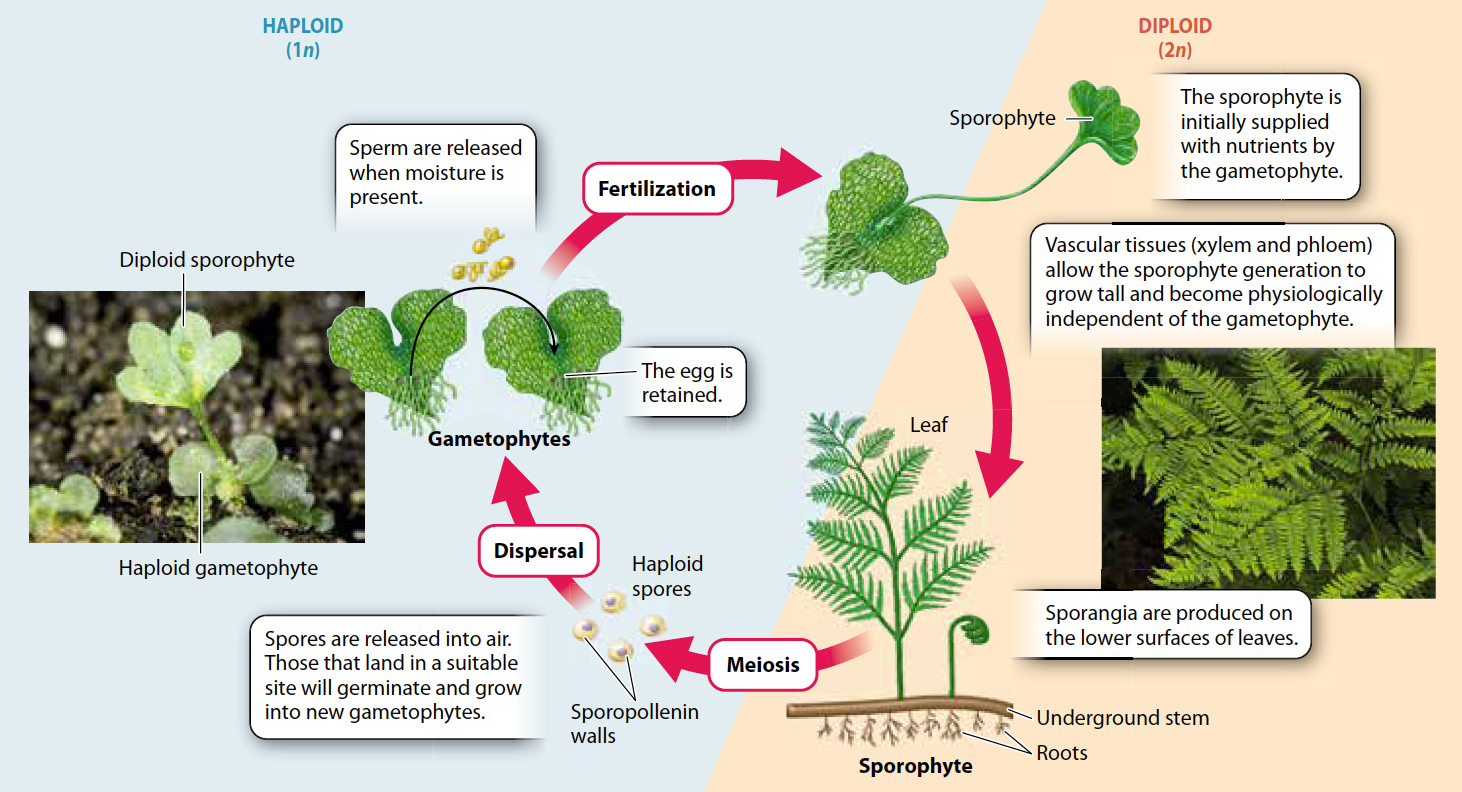Spore-dispersing vascular plants have free-living gametophytes and sporophytes.
In Chapter 29, we saw that the evolution of vascular tissues allowed plants to grow tall. Xylem and phloem are present only in the sporophyte generation because spore dispersal is enhanced by height whereas gametophytes must remain small and close to the ground to increase the chances of fertilization. A major change in the plant life cycle is that in vascular plants the sporophyte is the dominant generation both because the sporophyte is physically larger than the gametophyte and because its photosynthetic production is much higher than that of the gametophyte.
The first two groups of vascular plants—
To illustrate this, let’s examine the life cycle of the bracken fern Pteridium aquilinum. We begin with the largest component of the life cycle—

As the sporangia dry out, they break open and the spores are released. Most spores travel only short distances, but a few may end up far from their parent. Bracken ferns can be found on every continent except Antarctica, as well as on isolated oceanic islands, testimony to the ability of spores to travel long distances.
Spores that land in a favorable location can germinate and grow to form the haploid gametophyte generation. You have probably never seen a fern gametophyte—
Fern gametophytes typically produce either male or female gametes. The male gametes swim to the egg on a nearby gametophyte through a film of water. The union of a male and a female gamete forms a diploid zygote, which develops in place and is supported by the gametophyte as it begins to grow. Eventually, the developing sporophyte forms leaves and roots that allow it to become a physiologically independent, diploid plant.
Ferns release swimming sperm and thus are able to reproduce only when conditions are wet. That is true of the other spore-
Quick Check 2 In what ways is fern reproduction similar to moss reproduction? In what ways is fern reproduction different from moss reproduction?
Quick Check 2 Answer
Both mosses and ferns exhibit an alternation of a haploid (gametophyte) generation and a diploid (sporophyte) generation, the release of swimming sperm, and the dispersal of spores. However, in mosses, the sporophyte is completely dependent on the gametophyte, whereas in ferns the sporophyte is only initially dependent on the gametophyte and eventually becomes free-